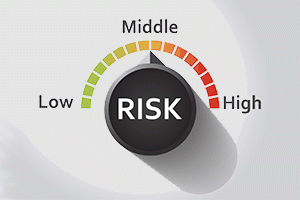
We are encouraged by research conducted by Randall Clement, Henk Berkman and Annie Zhang which concluded there needed to be a clearer risk classification system to help investors.
Clearer risk classification across the various KiwiSaver funds is something that was in our opinion overlooked from day one for all but the Default funds.
We are often left asking ourselves what exactly constitutes a fund that falls into the Conservative, Moderate, Balanced, Growth or Aggressive category. What do these industry labels actually mean for investors?
These questions largely remain unanswered except for the Default funds which are mandated under law.
Default funds were intended to be a short term solution, a holding pen for money awaiting reallocation rather than a long term investment solution. The short term nature of the investment dictates it needs to be conservatively managed within some tight guidelines.
There is some wiggle room in terms of ranges across the various asset classes but for all intents and purposes the managers will not be expected to vary greatly within this sector and should produce similar returns.
Maybe an answer to some of our risk classification questions will be answered under the new Financial Markets Conduct Act (2013) and Financial Markets Conduct Regulations (2014) where fund managers will be required to calculate and present a risk indicator for managed funds, including KiwiSaver funds.
The purpose of having a risk indicator is to get some standardisation across the industry and for consumers of the perceived risk associated with a specific fund. Having a standard measure of risk will remove some of the subjectiveness and confusion that currently exists.
Clement et al. also found some managers who self-reported their risk category were actually incorrect and this supports some of our own findings and the reason why we have assigned our own classifications to certain KiwiSaver funds independent of the market and other research houses.
While the authors declined to name and shame the managers they did indicate that some funds within the moderate-balanced and balanced peer groups exhibited volatility similar or greater than the average volatility of growth funds.
We highlighted a similar point in our recent review of Growth funds where the best in category fund was labeled Balanced. Our conclusion from reviewing and reporting on several quarters of returns was that in some instances the name of the fund was meaningless.
Our tables outlining the performance of the various funds we cover under our unique regular savings return methodology indicates how interest.co.nz classify each fund compared to both Sorted and research house Morningstar.
Our March reviews of the Conservative & Default funds, Moderate funds, Balanced funds, Growth funds and Aggressive funds can be found here, here, here, here and here.
The research also highlights that variances in classification are principally due to asset allocation.
At interest.co.nz our classification process involves not only making a judgment on the asset allocation but also examining the publicly available information around the investments held or sub-manager strategy; the funds investment strategy and philosophy; investment processes; liquidity of the underlying investments; size bias (e.g. small/mid cap vs large cap stocks); use of derivatives and alternative investments; volatility in returns over various periods and also leveraging off experience gained from within the industry.
By way of an example, a typical investor who wants to invest conservatively could reasonably expect a fund that is labeled conservative to have a high degree of capital stability; a low chance of capital loss over a 10 year period; have strong credit quality across the fixed interest and cash portion; have a high degree of liquidity and within the growth portion be diversified across regions, sectors and industries as well as be predominately exposure to large well known companies.
One caveat around the credit quality of the bonds is that not all bonds are rated by a rating agency for various reasons and therefore managers would classify these as un-rated for the purposes of disclosure. In these instances a common sense judgment is generally made and taken into account when assigning to a risk category.
We won’t always get the classifications right 100% of the time. There is judgment involved and we don’t simply rely on the quantitative or qualitative information to make our assessments. To see our early story of how we classify funds see here.
The process we have adopted will continue to be refined over time as necessary and it is possible some funds will move categories based on changes to any of the inputs into our model.
We welcome the latest research findings and the introduction of the new legislation as this should provide for a measure of consistency in determining the risk of various KiwiSaver funds and enable investors to make more informed decisions on where they invest their retirement savings.
We welcome your comments below. If you are not already registered, please register to comment
Remember we welcome robust, respectful and insightful debate. We don't welcome abusive or defamatory comments and will de-register those repeatedly making such comments. Our current comment policy is here.